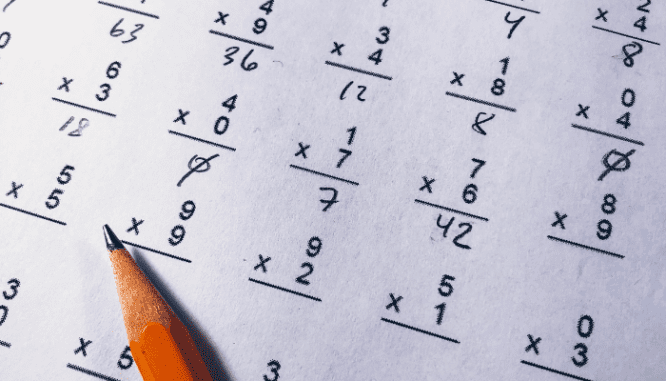The Ins and Outs of Property Value Assessment (and What Buyers Need to Know)
- Published on
- 4 min read
-
 Ben Walker Contributing AuthorClose
Ben Walker Contributing AuthorClose Ben Walker Contributing Author
Ben Walker Contributing AuthorBen Walker is a content marketing writer with a passion for exploring new writing topics and getting lost in real estate listings. His specialties include real estate, travel, credit cards, and personal finance. Ben's work has been featured in The Washington Post, MSN, Fox Business, and Thrive Global.
It can be confusing to get loads of numbers thrown at you during a homebuying search. Each home has an assessed value, which comes from a property value assessment — but there’s also the fair market value and an appraisal value. And they’re not exactly the same. In fact, all three values can be quite different (and often are).
Though, the most confusing number is often the assessed value. It typically has little to do with the other numbers, and rarely affects the final amount you might pay for a home. But don’t take our word for it — let’s see what a professional has to say.
“Occasionally a buyer will see what the assessed value is online and ask why the general market value is significantly higher than the tax assessed value,” says Ben Nemec, a top real estate agent in Huntsville, Alabama, who sells properties 62% quicker than the average Huntsville agent. “And we have to explain in that case that the tax assessed value has absolutely no bearing on the market value.”
So there you have it, a clear distinction between assessed value and what you might pay for a home based on market value. But is that all? Is there no correlation between these values? For more details, we dug into the research and spoke with Nemec and Kris Poulson, assessor for Utah County, Utah.

What is assessed value?
The assessed value of a home is a dollar value assigned to the property for tax purposes. “Assessed value is really only used by the tax assessor to determine what the taxes on a property should be annually,” says Nemec.
This value is assigned by a government assessor. Each assessor typically presides over a specific tax district where they’re responsible for administering property value assessments in the area. The process for measuring assessed value is often similar between different tax districts, though you might find a few variations here and there.
For homeowners, the number you see on your property tax bill is often a direct result of a property value assessment completed by a local tax assessor. If you’re searching for a home, you could use the assessed value to help determine how much your future property taxes might be.
How is the assessed value determined?
How assessed value is determined depends on where a property is located since the process could change between different tax districts — so it’s important to check how the process is done in the area where you’re looking to buy a home. However, many assessors will take into account the fair market value of properties in the area when determining a property’s assessed value. In some cases, the assessed value may be calculated as a percentage of the fair market value.
Since the market value can affect a property’s assessed value, it’s important to consider the types of factors that can affect market value. This could include the location of the property (think beachfront vs. downtown vs. suburb vs. rural), the property’s condition and quality, and how big the property is.
In addition, local property values and market conditions, including the levels of supply and demand, can have an impact on property value. Certain home features, such as a pool, and the findings from a home inspection might also impact a property’s value.
It’s important to note that your assessed value could be lower if you’re an owner-occupant (not a landlord) and qualify for a homestead exemption. This wouldn’t necessarily change a property’s market value, but it might lower your property tax.
Understanding different property values
You typically have three different values that represent your total property value, including fair market value, assessed value, and appraised value. Here’s how they work.
Fair market value
Your fair market value is the amount a property could sell for based on a number of different factors, including location, property condition, square footage, and home features. Market value can change as these factors change or if market conditions change. For example, if property inventory is low and demand is high, market value can increase much higher than is typical for some areas.
Fair market value is a direct result of the demand in the market and what buyers are likely willing to spend.
Assessed value
The assessed value is the taxable value of a property and is often based on a percentage of the fair market value. Government assessors assign assessed values to properties within their tax districts, which are typically counties or municipalities. Each tax district could have its own assessment rate, which might be determined by state and local governments. The higher the assessment rate, the more property taxes you’re likely to pay.
Appraised value
The appraised value is a dollar value estimate assigned to a property by a licensed appraiser. This is typically a required step if you want a mortgage from a lender. The appraised value is determined by the appraiser, but it’s often impacted by factors that also affect a property’s market value. This could include a home’s size, features, condition, and any changes in market conditions.
Since the appraised value is assigned by a professional appraiser, its amount could differ from the property’s fair market value. This is because an appraiser might not come to the same exact conclusion for the property’s value as a seller, buyer, or real estate company has.

Estimating your property’s assessed value
You typically have two ways to estimate your property’s assessed value depending on the information you have available. Though, both ways should give you the same end result.
The first way takes the market value of a property and multiplies it by the assessment rate. You then divide the product by 100. Here’s what the formula looks like:
Assessed value = (market value x assessment rate) / 100
So if the market value of a property is $400,000 and the assessment rate is 80%, you would have an assessed value of $320,000.
The second way multiplies your property tax bill by the tax rate and then multiplies that product by 100. This is the formula:
Assessed value = (property tax bill x tax rate) x 100
With a property tax bill of $3,200 and a real estate tax rate of 1%, your assessed value would be $320,000.
Either of these formulas works for estimating your assessed value, though one might be easier to do based on the available information.
Calculating property taxes
Calculating your property taxes isn’t difficult and often only requires a few numbers, which include your property’s assessed value and your property tax rate. If you multiply these numbers, you should get a good estimate of your property taxes. This is how the formula would look:
Property taxes = assessed value x property tax rate
Using the formulas in the previous section, you should be able to calculate your assessed value. Or you can search online through public records or contact your local tax assessor. To find your property tax rate, also known as a mill rate or mill levy, check your local government website or contact them.
Another way to calculate your property taxes would be to use this type of formula:
Property taxes = fair market value x assessment ratio x mill rate
So if a property has a market value of $400,000 in a county with a 50% assessment ratio and a mill rate of 20 mills (or 0.02 in decimal form), you’d end up with effective property taxes of $4,000 ($400,000 x 0.50 x 0.02 = $4,000).
Disputing assessed value
You might have a higher property tax bill than you’d like, which could result from your home having a high assessed value. In some cases, you might feel like the assessed value is incorrect. Fortunately, you should be able to file an appeal with your local government office to try and correct any applicable issues, which is one way to try and lower your property tax.
For example, here is how the process works in Utah County, Utah: “If the property owner disagrees with the assessed value they can appeal the value to the board of equalization,” says Poulson. “The board of equalization is a function of the auditor’s office, creating neutrality between the assessment office and the property owner. Should the property owner disagree with the county decision, they can appeal to the state tax commission.”
Don’t feel like you’re going against set government rules if you file an appeal. Property owners know their properties the best, so it can be helpful for an owner to clarify things for local tax assessors. In addition, a tax assessor might have tens of thousands or more properties to assess, so it’s not unheard of to have some incorrect assessments — especially if changes have been made to properties.

Benefits of knowing a home’s value
If you know a home’s value, it will likely be easier to plan and adjust for your financial goals. This could include having an estimate of your property taxes, as well as knowing how much you might have to pay when buying a home (or how much you stand to earn when selling a home).
Knowing this information ahead of time could pave the way for making other important financial decisions, such as putting money into savings or investments. And if you’re thinking about refinancing your home, knowing its value could help you determine what kind of cash-out refinancing options you might have.
Header Image Source: (Alex D’Alessio / Unsplash)
